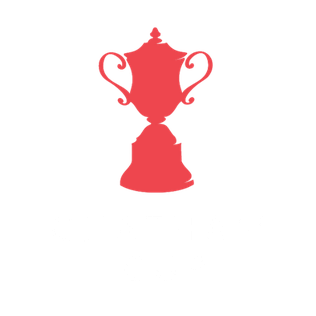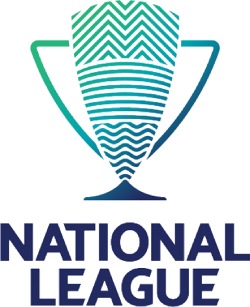Related Research Articles

The Chatham Cup is New Zealand's premier knockout tournament in men's association football. It is held annually, with the final contested in September. The current champions of the Chatham Cup are 2023 winners Christchurch United, who defeated Melville United AFC on penalties in the final.
The New Zealand National League is the name given to the current New Zealand top football competition. Originally set up as the New Zealand National Soccer League there has been many versions of the competition as well as many different names. The most common format saw club teams play each other, at least two times, on a home and away basis. At the completion of those games, the best-performing team was declared as the New Zealand champion. The latest version has the clubs play in their regional leagues with the top teams qualifying for the Championship phase to then play each other for the champion.

The Central League is an amateur status league run by Capital Football for association football clubs located in the southern and central parts of the North Island. It is a New Zealand top-tier competition during the winter season, and sits at step two overall under the summer National League.
The 1971 New Zealand National Soccer League was the second season of a nationwide round-robin club competition in New Zealand football. The league was expanded at the end of the inaugural season, so there was no relegation from the 1970 league season. Hungaria, who had competed in the inaugural season, combined with Miramar Rangers to form a new composite league team, Wellington City. Though Miramar withdrew from the team after the 1971 season, the team continued to use the new name.
The 1972 New Zealand National Soccer League was the third season of a nationwide round-robin club competition in New Zealand football.
The 1976 New Zealand National Soccer League was the seventh season of a nationwide round-robin club competition in New Zealand football.
The 1977 New Zealand National Soccer League was the eighth season of a nationwide round-robin club competition in New Zealand football. An expansion by two teams meant that it was the first year in which twelve teams took part. Prize money was significantly increased for the top three clubs, and the number of teams relegated increased from one to three, these being automatically replaced by the winners of the three regional leagues.
The 1978 New Zealand National Soccer League was the ninth season of a nationwide round-robin club competition in New Zealand football. A change was made from previous years, with the replacement of goal average by goal difference as a means for ranking teams equal on points.
The 1979 New Zealand National Soccer League was the tenth season of a nationwide round-robin club competition in New Zealand football. It produced the biggest winning margin in the league's history, with Mount Wellington never being in serious danger of finishing anywhere but first.
The 1982 New Zealand National Soccer League was the 13th season of a nationwide round-robin club competition in New Zealand football. Mount Wellington comfortably won the league for a fifth time, finishing seven points clear of second-placed Hanimex North Shore United. This was the last season in which a win scored two points; from 1983 wins were worth three points.
The 1983 New Zealand National Soccer League was the 14th season of a nationwide round-robin club competition in New Zealand football. Manurewa comfortably won the league for the first time, finishing eight points clear of second-placed Hanimex North Shore United. This was the first season in which a win scored three points; prior to this they were worth only two.
The 1987 New Zealand National Soccer League was the 18th season of a nationwide round-robin club competition in New Zealand football. It was the first season in which 14 teams competed in the league, up from 12 in the previous season, and was also the first season with new sponsors Air New Zealand, leading to it being called the Air New Zealand Soccer League. Christchurch United finished as champions, seven points clear of Gisborne City.
The 2000 New Zealand National Club Championship, also known, due to naming-rights sponsorship, as the Ansett National Club Championship was the inaugural season of a nationwide club competition in New Zealand football. It replaced the 1999 New Zealand island soccer leagues and was a re-formed version of the national soccer league which had been run from 1970 to 1992. The competition was won by Napier City Rovers.
The 2019 Chatham Cup is New Zealand's 92nd annual knockout football competition.

The New Zealand Men's National League is a men's football league at the top of the New Zealand football league system. Founded in 2021, the New Zealand National League is the successor to the New Zealand Football Championship. The league is contested by ten teams, with teams qualifying from their regional leagues. Four teams qualify from the Northern League, three qualify from the Central League, two qualify from the newly formed Southern League and the Wellington Phoenix Reserves are automatically given a spot each year.
The 2014 Chatham Cup was New Zealand's 87th annual knockout football competition.
The 2022 New Zealand Men's National League is the second scheduled season of the National League since its restructuring in 2021; the 2021 National League was cancelled due to the COVID-19 pandemic in northern regions. 32 clubs compete in the competition, with four qualifying from the Northern League, three qualifying from the Central League and two qualifying from the Southern League for the National Championship phase. Each team can field a maximum of four foreign players as well as one additional foreign player who has Oceania Football Confederation nationality. Each team must also have at least two players aged 20 or under in the starting eleven.
The 2022 Chatham Cup is New Zealand's 94th annual knockout football competition.
The 2023 New Zealand Men's National League was the third season of the National League since its restructuring in 2021. 32 clubs compete in the competition, with four qualifying from the Northern League, three qualifying from the Central League and two qualifying from the Southern League for the National Championship phase. Each team can field a maximum of four foreign players as well as one additional foreign player who has Oceania Football Confederation nationality. Over the course of the season, each team must also ensure players aged 20 or under account for 10% of available playing minutes.